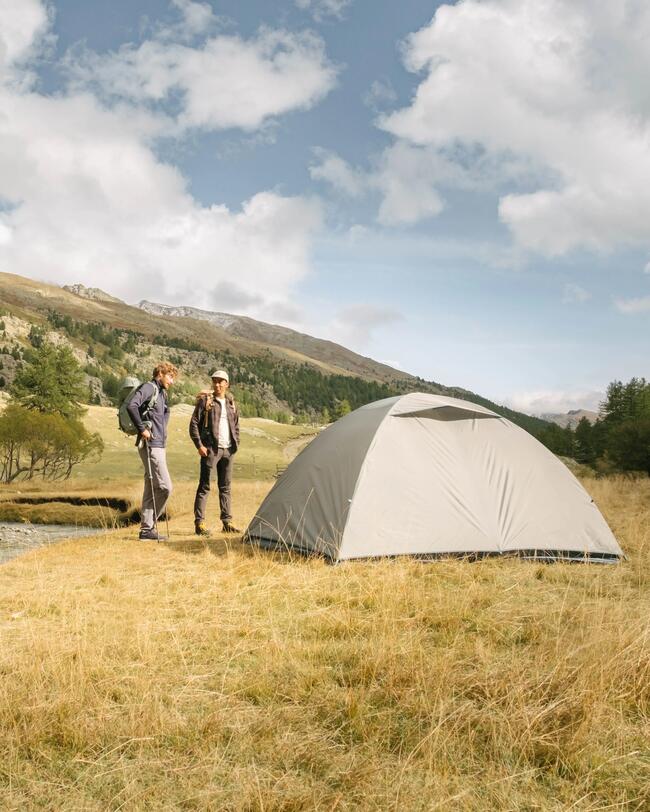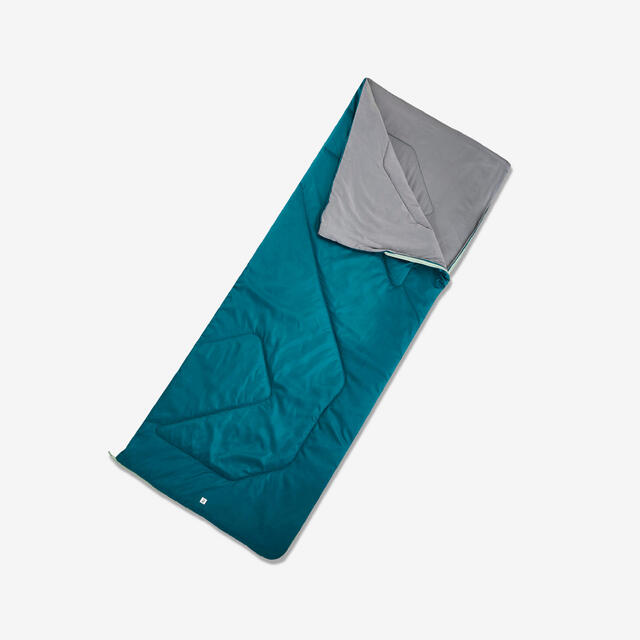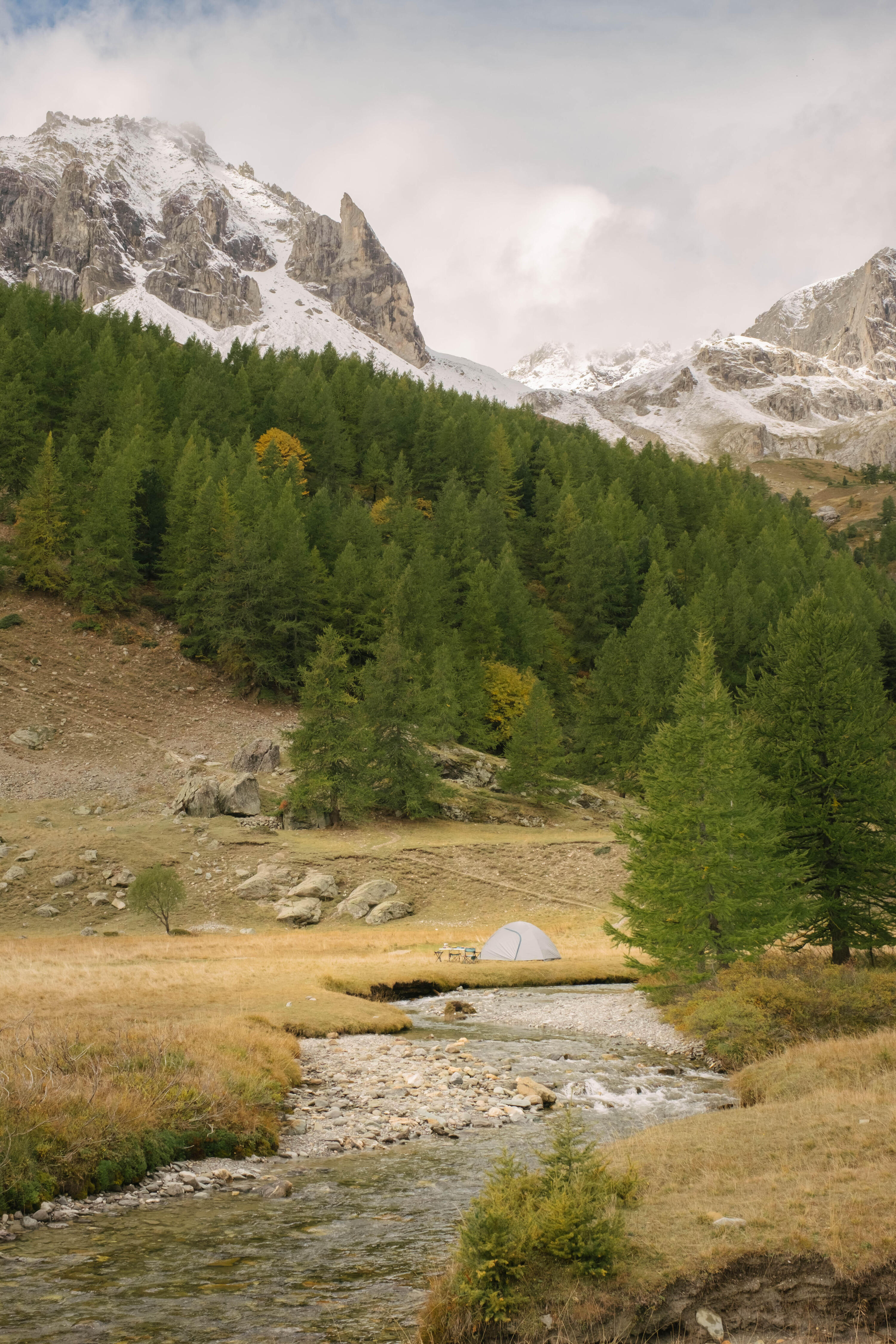Simple pitching
With a self-standing dome structure and simple pole installation you can even reposition once up for better views.
| frequency | occasional |
| weather conditions | mild weather |
| rain | heavy rain |
| wind | light wind |
| number of persons | 4 persons |
| assembly type | assembly with poles |
| number of rooms | 1 room |
| storage space | without storage space |
| living area | without living area |
| shape of the tent | dome |
| number of season(s) | 2 seasons |
| weight (in kg) | 4.7 kg |
| weight of the tent | weight > 4kg |
| freestanding tent | freestanding tent |
| type of poles | fiberglass |
| double roof material | polyester |
Main fabric: 75.0% Polyester, 25.0% Polyethylene |
Pole: 100.0% Glass Fiber |
Picket: 100.0% Steel |
Sleeping width: max. 65 cm per person.
Storage: after use or cleaning, wait until the tent is perfectly dry before putting it away in order to avoid bad smells and mould.
Do not wash.
Do not dry clean.
Do not iron.
Do not tumble dry.
Bleaching excluded.
Our design teams are working to develop processes that will reduce the impact of a product, while preserving its technical characteristics. This reduction relates to the following indicators: climate change, air pollution, water pollution and resource depletion.
Using this mass-dyeing process enables us to reduce CO2 emissions linked to the production of dyed textiles by at least 46% compared to conventional dyeing.
Using this finishing process enables us to reduce CO2 emissions linked to the production of undyed textiles by at least 58% compared to conventional dyeing.
Using this dyeing process enables us to reduce the CO2 emissions linked to the production of the dyed component by at least 60% compared to conventional dyeing.
| frequency | occasional |
| weather conditions | mild weather |
| rain | heavy rain |
| wind | light wind |
| number of persons | 4 persons |
| assembly type | assembly with poles |
| number of rooms | 1 room |
| storage space | without storage space |
| living area | without living area |
| shape of the tent | dome |
| number of season(s) | 2 seasons |
| weight (in kg) | 4.7 kg |
| weight of the tent | weight > 4kg |
| freestanding tent | freestanding tent |
| type of poles | fiberglass |
| double roof material | polyester |
Main fabric: 75.0% Polyester, 25.0% Polyethylene |
Pole: 100.0% Glass Fiber |
Picket: 100.0% Steel |
We rigorously test QUECHUA products at our design centre at the foot of Mont-Blanc and then in the field under real-world conditions.
Waterproofing test
Our initial lab test simulates a tropical storm with the equivalent of 200mm of rain per hour. The second test is done in the field under real-life conditions by our teams. We use a closed circuit so we can recycle the water.
Wind resistance test
Using a wind tunnel and turntable, we expose each side of the tent to the same wind intensity. Properly pitched, this tent remains habitable to Force 5 winds, measured at 35km/hr.

Simple pitching
With a self-standing dome structure and simple pole installation you can even reposition once up for better views.

Room for adventure
Room for 4 to rest well in one bedroom after a day of trekking.

Simple pitching
With a self-standing dome structure and simple pole installation you can even reposition once up for better views.

Room for adventure
Room for 4 to rest well in one bedroom after a day of trekking.

Simple pitching
With a self-standing dome structure and simple pole installation you can even reposition once up for better views.

Room for adventure
Room for 4 to rest well in one bedroom after a day of trekking.



